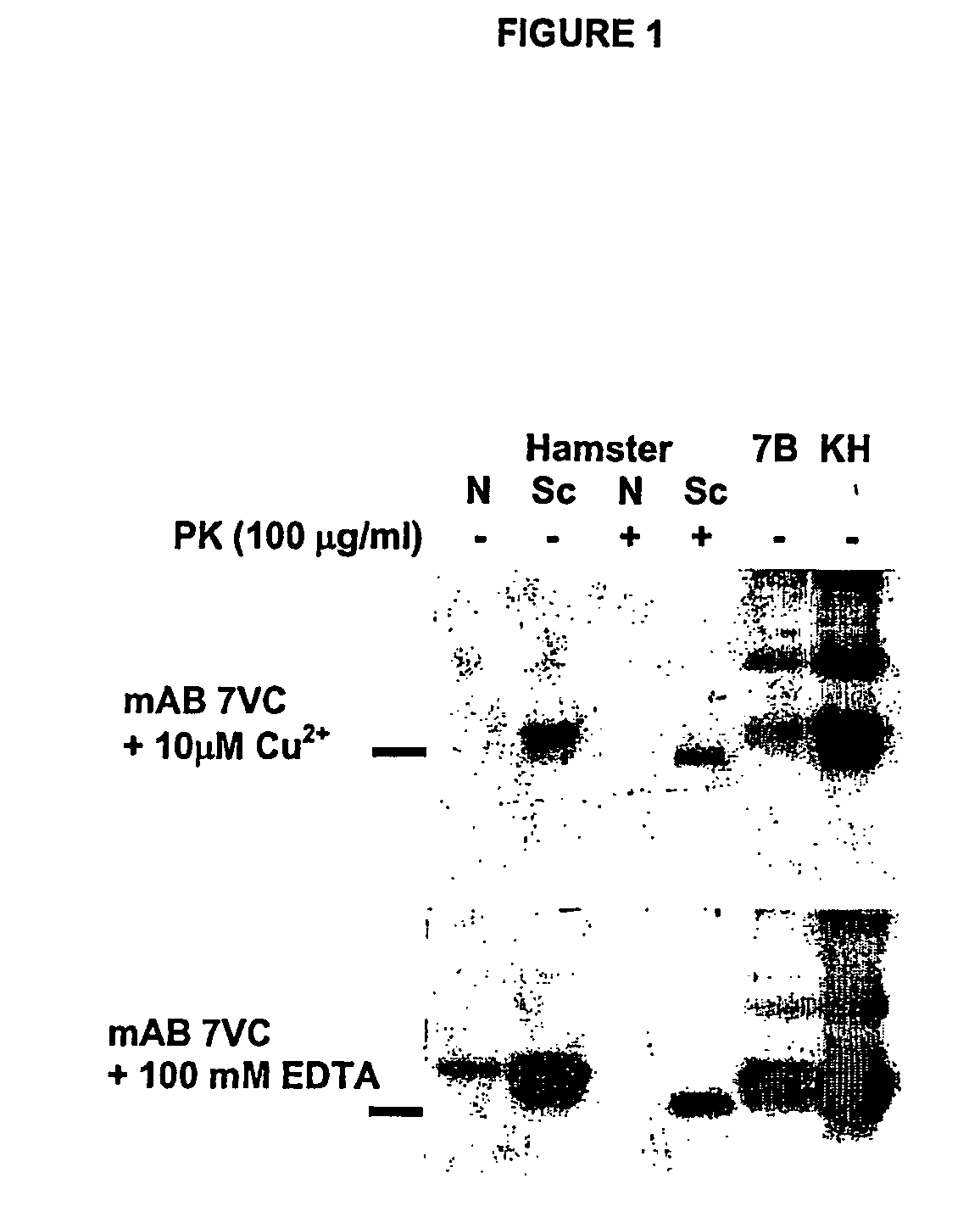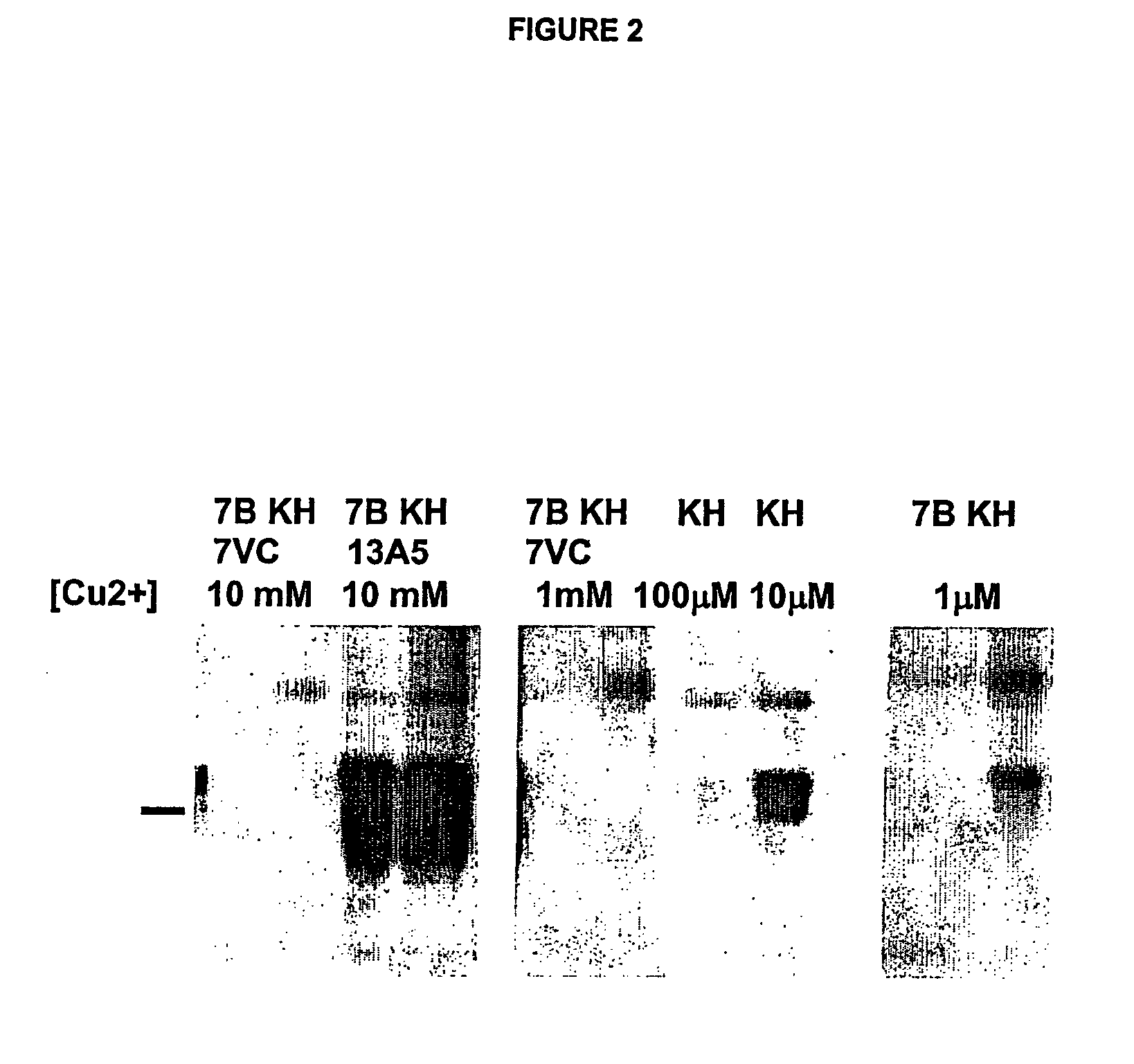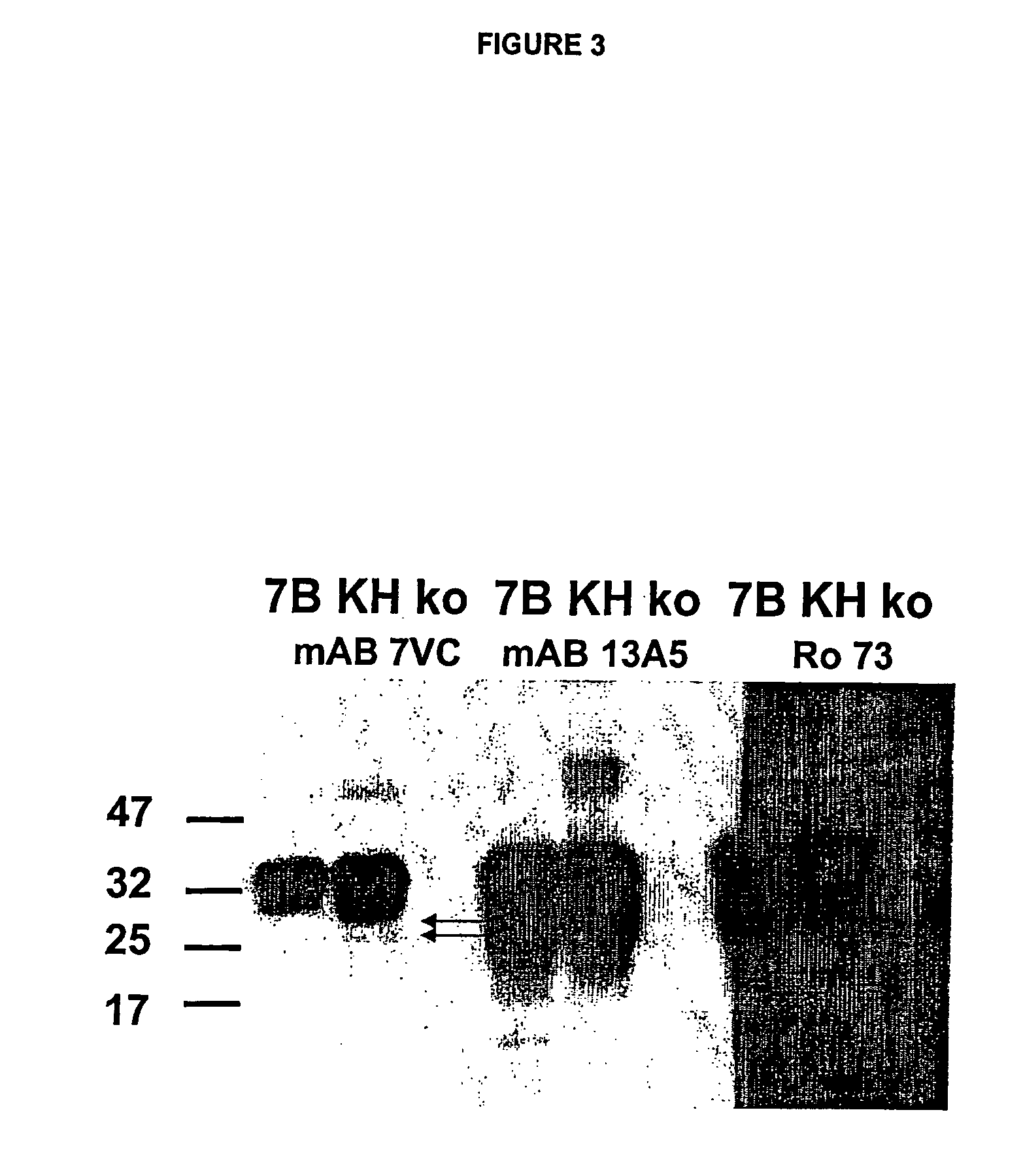Use of monoclonal antibodies to distinguish protein conformational isoforms
a technology of conformational isoforms and monoclonal antibodies, which is applied in the field of distinguishing protein conformation isoforms, can solve the problems of lack of tools to recognize the heterogeneity of functional protein conformations, misfolded proteins may be as bad as, or worse, than not having proteins, and achieve the effect of inhibiting prp expression and promoting differentiation of cells expressing prp
- Summary
- Abstract
- Description
- Claims
- Application Information
AI Technical Summary
Benefits of technology
Problems solved by technology
Method used
Image
Examples
example 1
Preparation and Analysis of Binding Characteristics of Conformer Specific Monoclonal Antibody to Prion Protein
Antibody Production:
[0081] 7VC hybridoma cells were grown in protein-free hybridoma medium (PFHM II; #12040-051 Gibco / Invitrogen, USA) containing OptiMAb (#11910-031 Gibco / Invitrogen, USA) in a 75 ml tissue culture flask. They were harvested shortly after the incubation medium began to discolor to a more yellowish color tone, in order to have maximal antibody concentration but minimal cell death. The antibody concentration was then measured by comparing the supernatant mAB concentration to a known one by Western blotting. It was around 100 μg / ml.
Experimental Protocol:
[0082] All Western blots were performed using the following protocol:
[0083] 1. 0.5% brain homogenates of hamsters or transgenic mice, as specified, were loaded in same amounts on a 12% SDS gel (run at 35 mA current) and transferred to a PVDF membrane by immersion (wet) blotting for 12 hours at constant cu...
example 2
Identification of a Monoclonal Antibody that Binds to NTM PrP
[0094] In vitro translated PrP isoforms were prepared as described in U.S. Ser. No. 09 / 739,179, filed Dec. 15, 2000 and published Sep. 26, 2002 as US-2002-0137915-A1, which disclosure is incorporated herein by reference. The conformational isoforms produced were screened by immunoprecipitation with monoclonal antibodies prepared using methods known to those of skill in the art and previously shown to interact with PrP (see for example the results in Example 1, above). In vitro translation of PrP isoforms is shown in FIG. 8 (leftmost lane), and immunoprecipitation with clones of 7VC (lane 2 and 3), and 19B10 (lanes 4 and 5). 19B10 does not recognize secretory or CTM PrP but only NTM PrP and precursor PrP.
example 3
Localization of PrP Isoforms in Scrapie-infected Neuroblastoma Cells
[0095] Permanently scrapie-infected neuroblastoma cells (ScN2a) were used that had been derived from infection of neuroblastoma cells (N2a cells; ATCC # CRL 131) with the RML strain of mouse-adapted scrapie (Chandler et al. 1961 The Lancet i: 1378-1379) and subsequent subcloning (Bosque and Prusiner, J. Virology 74: 4377-4386). Immmunostaining of the cells was performed as described in Korth et al., (2000) Journal of General Virology 81: 2555. Antibody suspensions used for 7VC and 19B10 were cell culture supernatants from HT medium (Minimal Essential medium (Invitrogen / Gibco # 21090-022), supplemented with 10% FCS (PAA Laboratories, Linz, Austria) and 100 U / 100 μg / ml penicillin / streptomycin, respectively, final concentration, with hypoxanthine and thymidine (both from Sigma, USA) added to 1.36 and 0.76 mg / 100 ml final concentration, respectively) in a concentration 1:1 with Phosphate-buffered saline. The results ar...
PUM
| Property | Measurement | Unit |
|---|---|---|
| Molar density | aaaaa | aaaaa |
| Molar density | aaaaa | aaaaa |
| Concentration | aaaaa | aaaaa |
Abstract
Description
Claims
Application Information
 Login to View More
Login to View More - R&D
- Intellectual Property
- Life Sciences
- Materials
- Tech Scout
- Unparalleled Data Quality
- Higher Quality Content
- 60% Fewer Hallucinations
Browse by: Latest US Patents, China's latest patents, Technical Efficacy Thesaurus, Application Domain, Technology Topic, Popular Technical Reports.
© 2025 PatSnap. All rights reserved.Legal|Privacy policy|Modern Slavery Act Transparency Statement|Sitemap|About US| Contact US: help@patsnap.com



